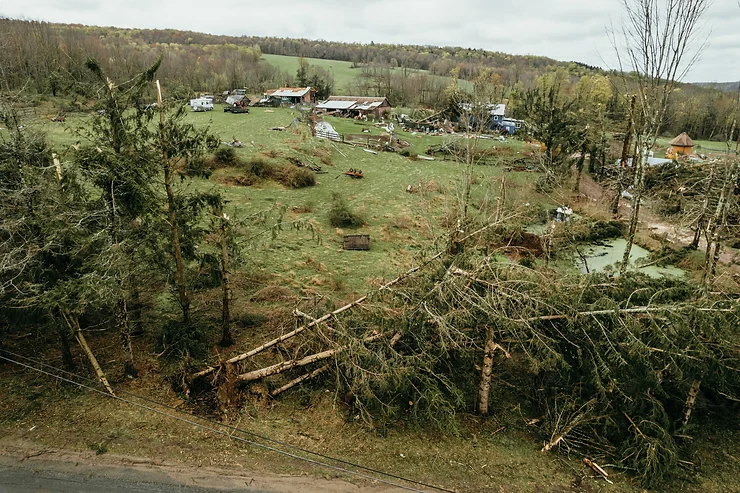
The severity of the storm itself can greatly impact the amount of tree damage that occurs. Stronger storms with higher wind speeds and heavier rainfall are more likely to cause significant tree damage than weaker storms.
Strong winds are one of the primary causes of tree damage during storms. As wind speeds increase, they can cause branches to break off or even uproot entire trees from the ground. Other variables, in relation to strong winds, can make tree damage more likely:
Tornadoes are a type of severe weather characterized by a rapidly rotating column of air that extends from a thunderstorm to the ground. The scale ranges from EF0 to EF5, with EF0 being the weakest and EF5 being the strongest. The EF scale takes into account the type and extent of damage to structures, trees, and other objects in the path of the tornado.
Tornado wind speeds can vary widely depending on the strength and size of the tornado. They can be extremely dangerous, with wind speeds that can exceed 200 miles per hour and cause significant damage to structures and infrastructure.
When faced with storm damage, it's important to prioritize safety first. If there are any downed power lines or gas leaks, stay away and call emergency services immediately. Once it's safe to do so, assess the damage to your property. Consider hiring a professional tree service company to help with the repairs.
Overall, there are many factors that can contribute to tree damage during storms. By understanding these causes, homeowners and property managers can take steps to minimize the risk of damage.